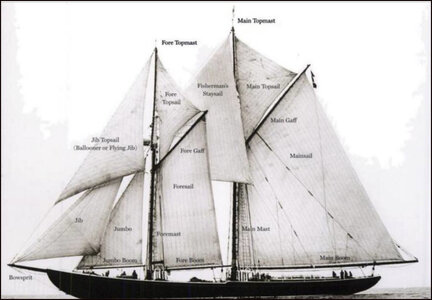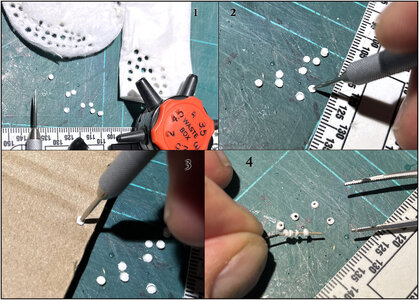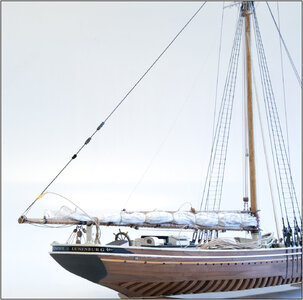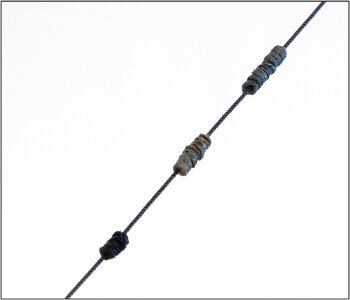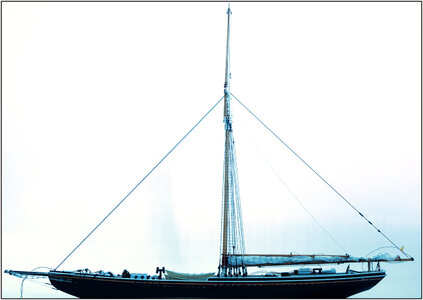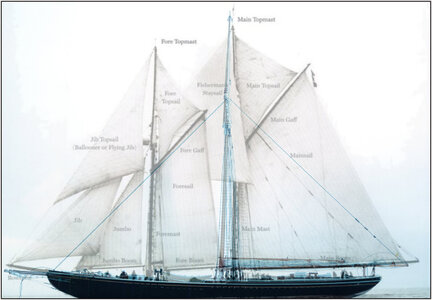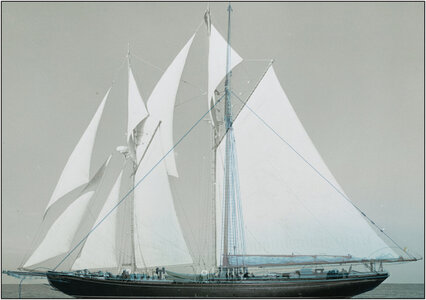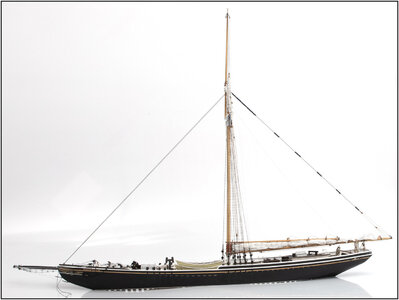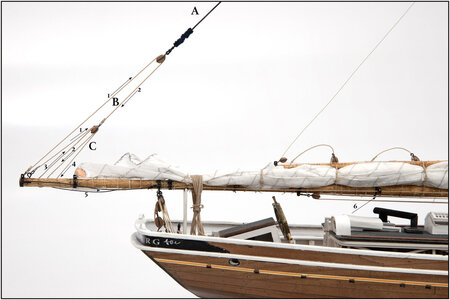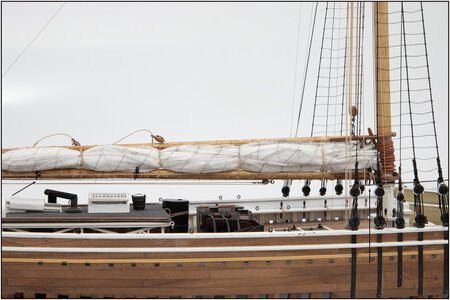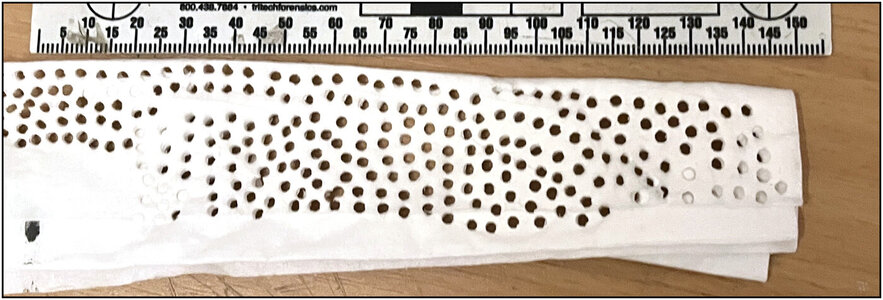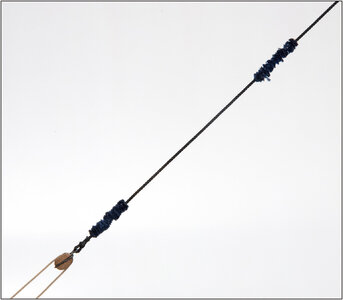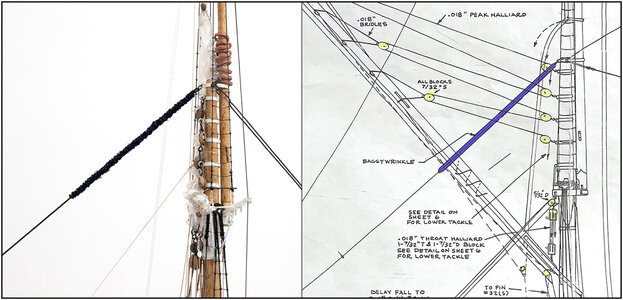The promised 'right angle' photo.
Playing around in Photoshop is fun, but sometimes also confrontational.
I took a photo perpendicular to the side of the model:
View attachment 343430
It seems that the baggywrinkle is quite in proportion.
This photo placed on the old photo I showed regarding the baggywrinkel. The layers in Photoshop can give you a degree of translucency. That produces this image:
View attachment 343432
The hulls placed on top of each other to scale them.
Before we start comparing, a note about photography. What kind of lens on the camera? And a distance, probably with something tele? That becomes quite a task with model photography to imitate exactly.
The comparison was about whether the diameter of the baggywrinkle was correct. That's okay.

There are differences, such as the place and position of the main mast and the bowsprit. The mast of my model could be slightly
backward and straighter. Only the last is possible.

But the question is whether the old photo is of the Bluenose.
I came across it on the internet. A quick search first yielded a link to Pinterest. And through some steps at the "Essex Historical Society & Shipbuilding Museum". But could not find the picture.
It is probably from the BN-II, given the radar dome on the foremast.
Found in Nova Scotia one other picture, also with the radar dome, where she is also almost at right angles. That gives this picture:
View attachment 343431
The hulls are again placed on top of each other. They match nicely. The mast of my model could be slightly
forward and straighter. Only the last is possible.

And given both comparisons the only thing I will do to the mast.
But enough rambling. I'll take a look at the 1st picture of this post again and continue building. But it's still fun to 'dive into the old box'.
Regards, Peter






